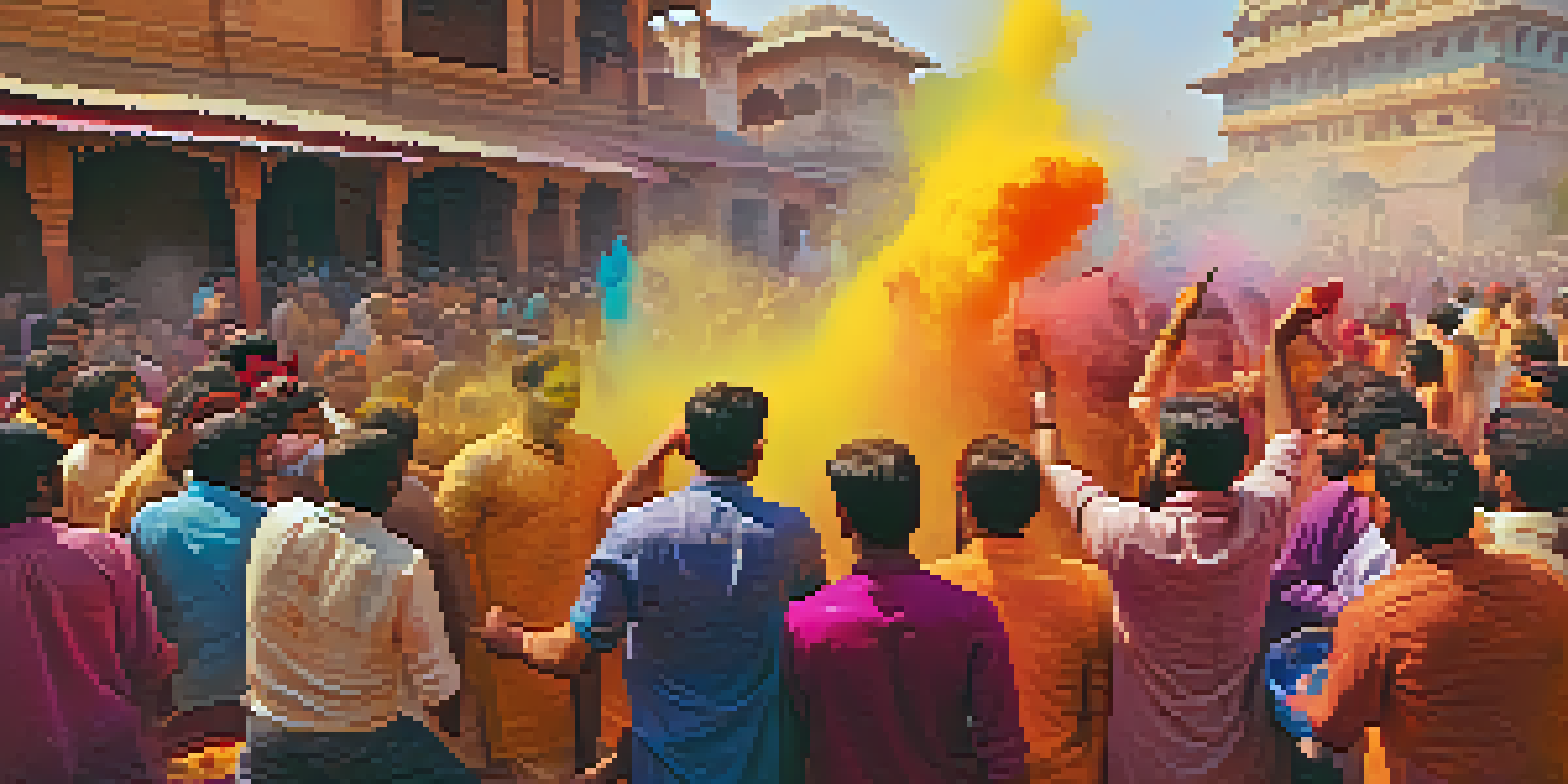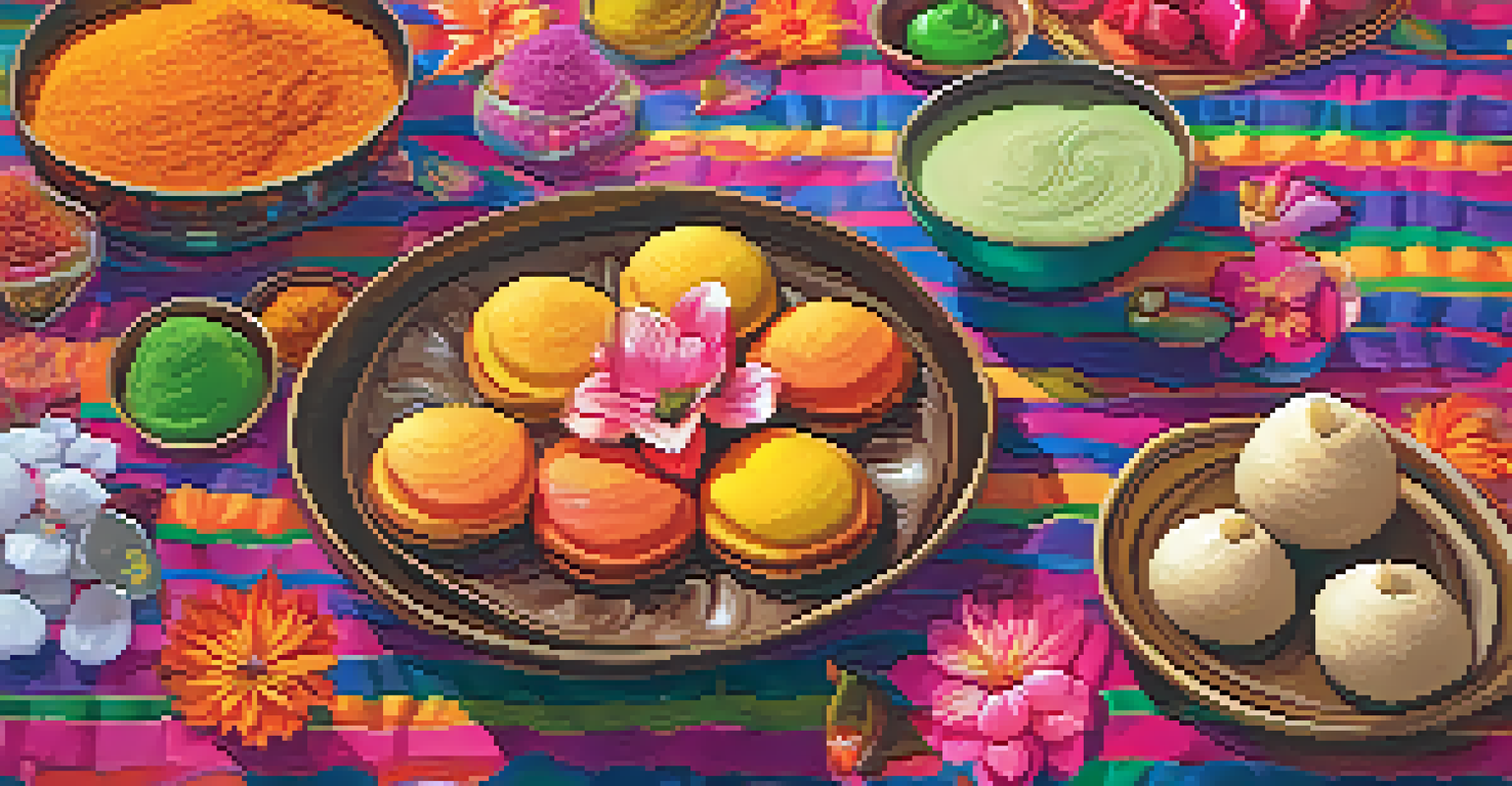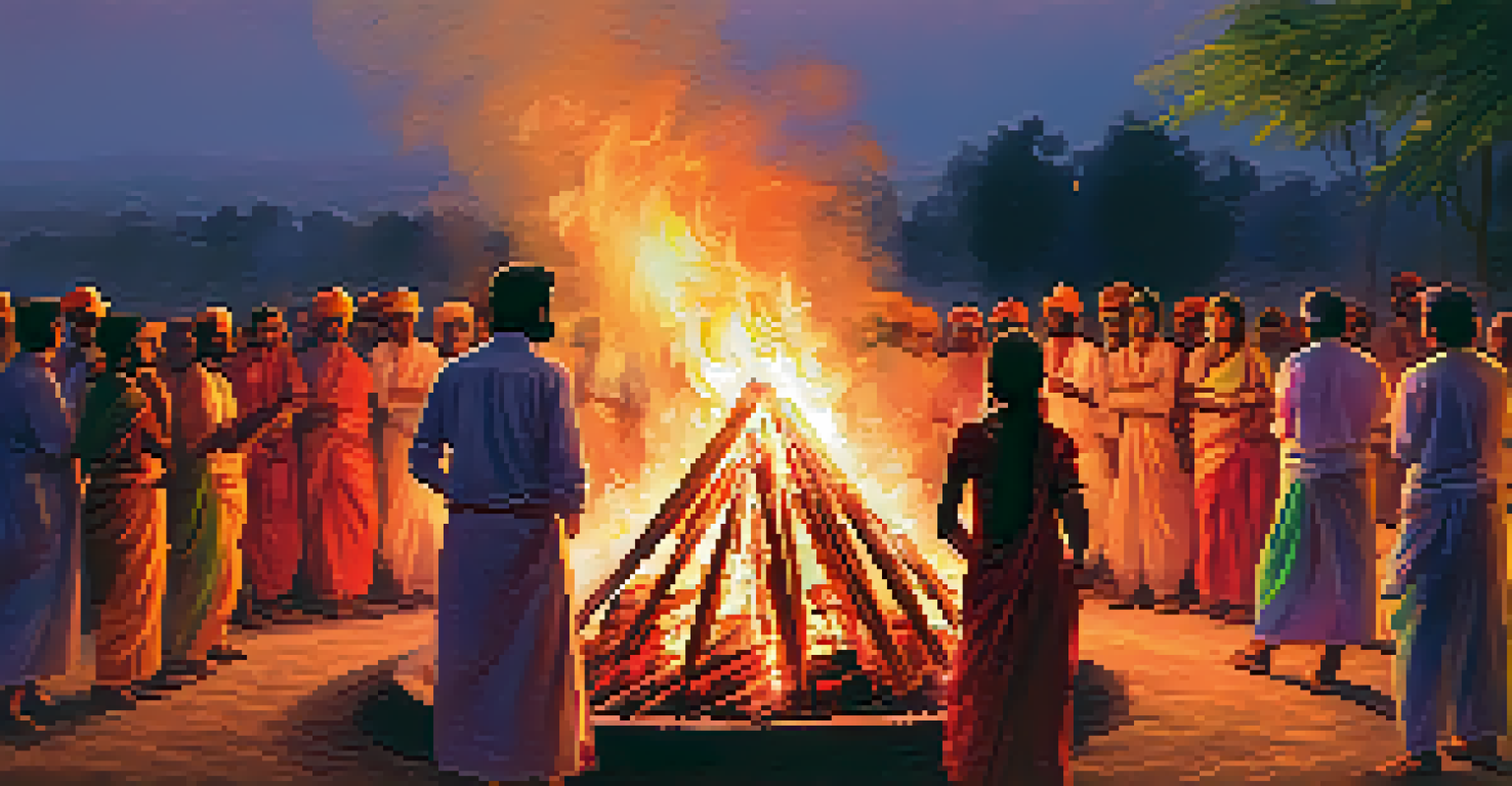Experience the Vibrant Colors of Holi Festival in India

What is Holi? Understanding the Festival of Colors
Holi, also known as the Festival of Colors, is one of India's most exuberant and joyous festivals. Celebrated primarily by Hindus, it marks the arrival of spring and the triumph of good over evil. This vibrant festival is renowned for its playful throwing of colored powders, known as 'gulal,' which creates a kaleidoscope of color in the streets.
The colors of Holi are like the colors of life; they remind us to celebrate our differences and come together in joy.
The origins of Holi can be traced back to various ancient legends, including the story of Prahlad and Holika, which symbolizes the victory of devotion and faith. On this day, communities come together to celebrate, dance, and sing, creating an atmosphere filled with laughter and camaraderie. It's a time for forgiveness, renewal of relationships, and the joy of togetherness.
As the sun rises on Holi, you’ll see people of all ages joyfully splashing colors on each other, creating a stunning visual spectacle. The festival fosters unity and love, breaking down barriers and inviting everyone to participate, regardless of age or background.
The Colors of Holi: More Than Just Fun
The vibrant colors used during Holi are not just for fun; they carry significant meaning. Each color represents different emotions and aspects of life. For instance, red symbolizes love and fertility, while yellow is associated with knowledge and learning. The act of throwing colors is a way for participants to express their joy and to share blessings with one another.

Traditionally, the colors were made from natural sources, such as flowers, turmeric, and other plants. Nowadays, while synthetic colors are also popular, many people are returning to these organic options for a more environmentally friendly celebration. This shift not only preserves the spirit of Holi but also promotes health and sustainability.
Holi Celebrates Unity and Joy
Holi is a vibrant festival that fosters community spirit, bringing people together to celebrate love, forgiveness, and the arrival of spring.
In addition to the physical colors, the emotional hues experienced during Holi are just as vibrant. The festival is a reminder to embrace happiness, let go of grudges, and celebrate life with friends and family, reinforcing the importance of community and connection.
Celebrating Holi: Traditions and Rituals
Holi celebrations vary across India, with each region adding its unique touch to the festivities. The night before Holi, many communities gather for a ritual called 'Holika Dahan,' where bonfires are lit to symbolize the burning away of evil spirits. This is often accompanied by singing and dancing, setting the stage for the joyous day that follows.
Holi is not just about colors, it's about embracing the spirit of togetherness and love.
On the main day of Holi, people wear old clothes because they know they'll be covered in colors. The celebration typically begins with the throwing of colors, followed by water balloons and water guns, creating a playful atmosphere. Street vendors also play a crucial role, selling delicious sweets and snacks, which are an integral part of the festivities.
Music is another vital component of Holi. People often play traditional songs, dance, and even join in on popular Bollywood tracks, creating a festive ambiance that resonates with joy. The combination of music, colors, and laughter makes Holi an unforgettable experience for everyone involved.
Holi Around the World: Global Celebrations
While Holi is deeply rooted in Indian culture, its vibrant spirit has transcended borders, leading to celebrations in various countries around the globe. Cities with large Indian diaspora populations, such as London, New York, and Sydney, host their own Holi festivals, attracting people from diverse backgrounds to join in the fun.
These international celebrations often blend traditional Indian customs with local influences, creating a unique experience. For instance, some events incorporate music festivals, community gatherings, and even art installations, turning Holi into a multicultural celebration that fosters global unity.
Colors Carry Deep Significance
The colors used during Holi symbolize various emotions, each representing different aspects of life, from love to knowledge.
The worldwide embrace of Holi showcases the festival's core essence: love, joy, and inclusivity. Whether in the streets of India or a park in the U.S., the spirit of Holi brings people together, reminding us of the universal human desire for connection and celebration.
Culinary Delights: Food During Holi
No festival in India is complete without a feast, and Holi is no exception. Traditional sweets and snacks play a central role in the celebrations, with favorites like 'gujiya' (sweet dumplings filled with khoya) and 'thandai' (a chilled milk drink with nuts and spices) taking the spotlight. Families often spend days preparing these delicious treats to be shared with friends and neighbors.
During Holi, food is not just about sustenance; it symbolizes sharing and hospitality. It's common for people to visit each other's homes to exchange sweets and enjoy meals together, adhering to the festival's spirit of togetherness. This culinary aspect adds another layer of joy, as families bond over cooking and feasting.
In recent years, there has been a growing trend of including healthier options in Holi menus, such as fruit-based sweets and organic snacks. This shift not only caters to health-conscious individuals but also aligns with the festival's focus on joy and well-being, making Holi a celebration for everyone.
Safety Tips for a Fun and Responsible Holi
While Holi is a time for fun and celebration, it's important to prioritize safety as well. With the playful throwing of colors and water, it's essential to protect your skin and eyes. Using natural colors can reduce the risk of skin problems, and wearing sunglasses can help shield your eyes from the vibrant powders.
Staying hydrated is another crucial aspect, especially if you're participating in outdoor festivities. Drinking plenty of water and avoiding excessive alcohol can help you enjoy the day without feeling exhausted. It's also wise to plan your celebrations in a safe environment, where you can enjoy the festivities without any worries.
Culinary Traditions Enhance Festivities
Food plays a central role in Holi celebrations, with traditional sweets and snacks symbolizing hospitality and the joy of sharing.
Lastly, respecting others' boundaries during celebrations is key to a fun Holi experience. Always ask for permission before throwing colors or water, as not everyone may be comfortable with the playful spirit of the festival. By being considerate, you not only enhance your own experience but also ensure that everyone around you enjoys Holi to its fullest.
The Spirit of Holi: Unity and Togetherness
At its core, Holi is a celebration of unity and togetherness. The festival encourages people to come together, irrespective of their backgrounds, to celebrate love, friendship, and the coming of spring. It's a beautiful reminder that joy knows no boundaries and can be shared by all.
Throughout history, Holi has served as a powerful symbol of social harmony. By participating in the festivities, individuals can shed their inhibitions and embrace a sense of community. The act of throwing colors is not only a way to express joy but also a gesture of acceptance and inclusion.

In a world that often feels divided, Holi stands as a beacon of hope, showing us the beauty of coming together to celebrate life. As you immerse yourself in the colors and laughter of Holi, remember the values it represents and the joy it brings to communities everywhere.